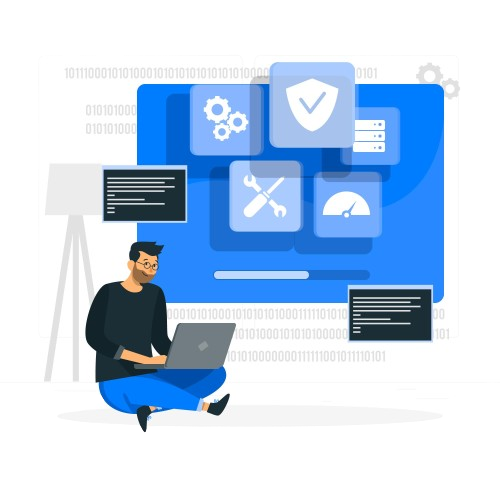The Power of Customization with ChatGPT
In the ever-evolving landscape of artificial intelligence, customization emerges as a key driver of innovation and effectiveness. OpenAI’s ChatGPT, with its natural language understanding and conversational capabilities, stands at the forefront of this transformative wave. This blog explores the profound impact of customization and how ChatGPT serves as a versatile tool, empowering businesses and developers to tailor conversational AI experiences to their unique needs.

The Essence of Customization:
Customization, in the realm of artificial intelligence, signifies the ability to adapt and tailor a system to specific requirements, preferences, and contexts. It is the antithesis of one-size-fits-all, offering the flexibility to align technology with the diverse needs of users, industries, and applications. In the context of ChatGPT, customization becomes a catalyst for unleashing its full potential across a myriad of domains.
The Evolution of Conversational AI Customization:
1. Natural Language Understanding:
Adaptation to Industry Jargon: ChatGPT can be fine-tuned to understand and generate responses specific to industry jargon, technical terms, or domain-specific language. This ensures that the model is proficient in communicating effectively within a specialized context.2. Contextual Awareness:
Retaining Domain-Specific Context: Customization allows ChatGPT to retain and understand context specific to a particular domain or industry. This contextual awareness enhances the coherence and relevance of responses in conversations related to specialized topics.3. User Experience Enhancement:
Tailoring Interactions: Developers can customize the user experience by defining the tone, style, and personality of ChatGPT. This tailoring ensures that the conversational AI aligns with the brand image and resonates with the intended audience.4. Task-Specific Adaptations:
Focused Task Performance: Through customization, ChatGPT can be adapted for specific tasks or workflows. Whether it’s generating code, answering support queries, or providing product recommendations, customization enables the model to excel in task-specific domains.Transformative Applications of Customization with ChatGPT:
1. Industry-Specific Chatbots:
Tailored Conversational Agents: ChatGPT customization allows businesses to create industry-specific chatbots. From healthcare to finance, these chatbots can understand and respond to queries using domain-specific terminology, ensuring a more accurate and valuable interaction.2. Personal Virtual Assistants:
Adaptive Virtual Support: Customizing ChatGPT enables the development of personal virtual assistants that understand individual preferences, adapt to user behavior, and provide personalized assistance across various tasks.3. Technical Support Enhancements:
Domain-Expert Chat Support: In technical domains, customization allows ChatGPT to function as a domain expert in chat support. It can provide detailed and technical responses, aiding users with complex queries and troubleshooting.4. Educational Tools:
Customized Learning Experiences: ChatGPT customization is instrumental in creating educational tools that cater to specific subjects or industries. The model can engage in conversations, answer questions, and facilitate learning experiences tailored to the educational context.5. Branded Conversational Interfaces:
Brand-Centric Conversations: Businesses can leverage ChatGPT customization to create branded conversational interfaces. The model adapts its language and communication style to reflect the brand’s identity, fostering a consistent and recognizable brand experience.Implementing ChatGPT Customization:
1. Define Customization Goals:
Identify Specific Requirements: Clearly define the customization goals, whether it’s adapting to industry terminology, creating a specific persona, or tailoring responses for particular use cases.2. Fine-Tuning Process:
Engage in Fine-Tuning: Utilize OpenAI’s fine-tuning process to customize ChatGPT. Fine-tuning involves training the model on domain-specific data, allowing it to adapt to the desired characteristics and nuances.3. Integration into Workflows:
Seamless Workflow Integration: Integrate the customized ChatGPT model into existing workflows, applications, or platforms. Ensure that the conversational AI seamlessly aligns with the intended user experience and serves its purpose effectively.4. User Guidance and Expectations:
Communicate Customization to Users: Clearly communicate any customization to users interacting with ChatGPT. Setting expectations regarding the model’s capabilities and adaptation ensures a transparent and user-centric experience.5. Continuous Monitoring and Improvement:
Iterative Refinement: Implement a system for continuous monitoring and improvement. Regularly assess the performance of the customized ChatGPT, gather user feedback, and refine the model to enhance its effectiveness over time.Addressing Challenges and Considerations:
1. Guarding Against Bias:
Bias Mitigation Measures: While customizing ChatGPT, implement measures to guard against biases. Regularly review and audit the model to ensure fairness and impartiality in its responses, particularly in sensitive or regulated domains.
2. Data Privacy and Security:
Safeguarding User Data: Prioritize data privacy and security during customization. Implement robust measures to safeguard user data, ensuring compliance with privacy regulations and building user trust.
3. Handling Edge Cases:
Addressing Uncommon Scenarios: Acknowledge and address potential challenges related to uncommon or ambiguous user queries. Define strategies for handling edge cases to ensure that the customized ChatGPT responds appropriately in diverse situations.
4. User Feedback Mechanism:
Continuous Improvement Loop: Establish a user feedback mechanism to gather insights into the performance of the customized ChatGPT. Iterate on the model based on user feedback, ensuring that it evolves to meet user expectations and needs.
